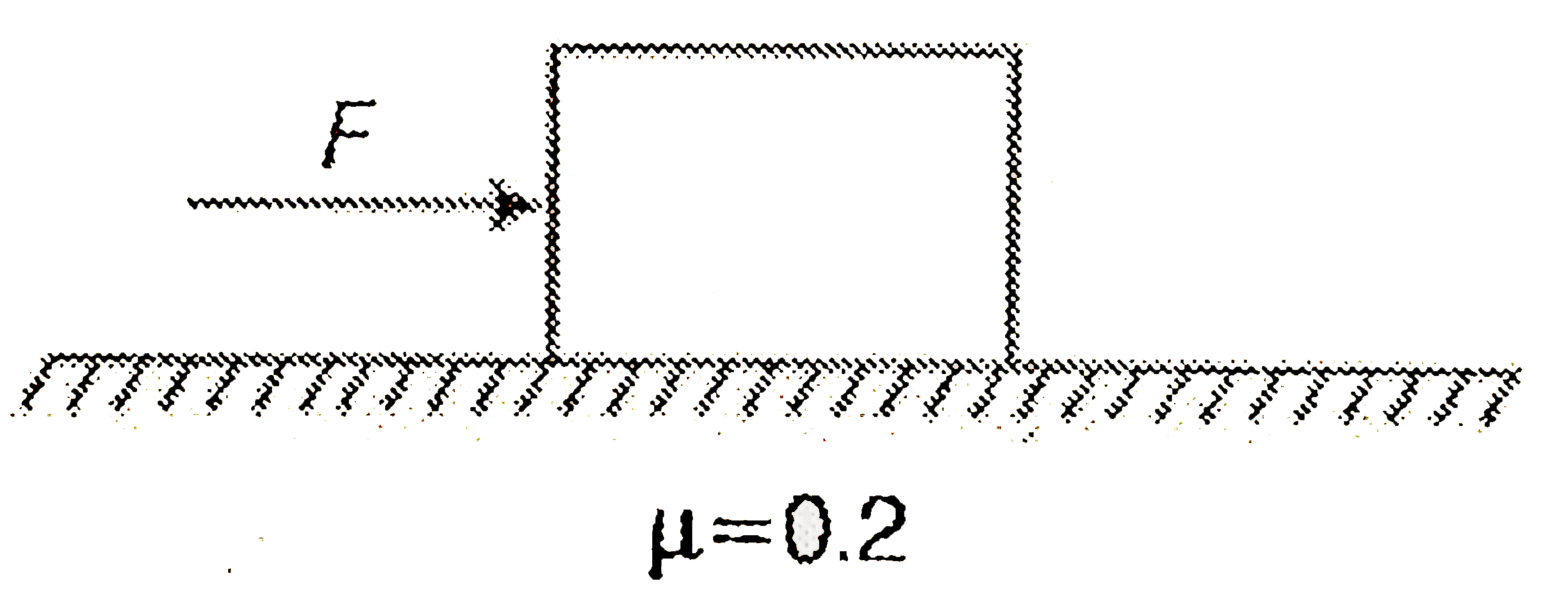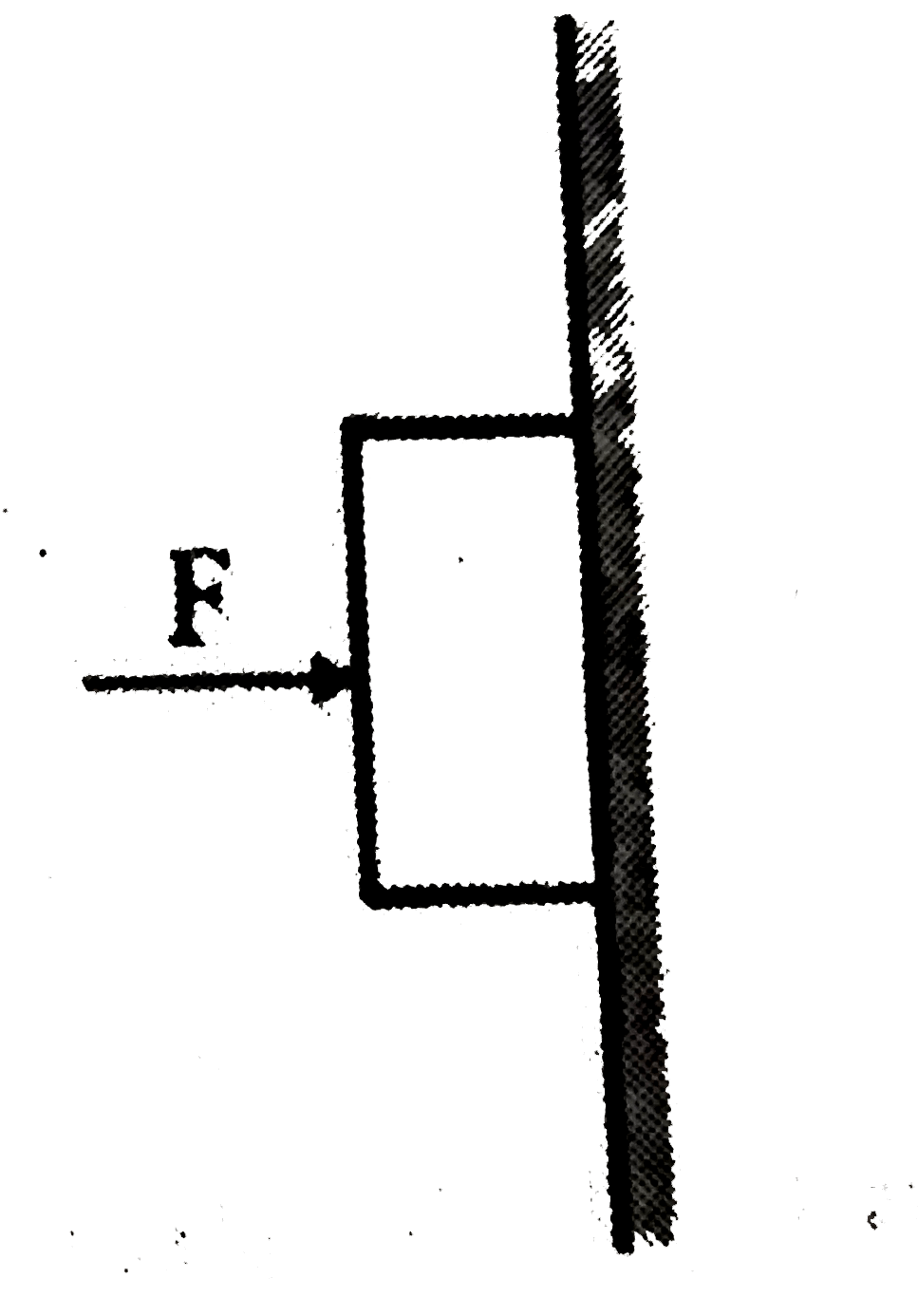the breaking strength of a steel cable is 20kN. If one pulls horizontally with this cable, what is the maximum horizontal acceleration which can be given to an 8 ton body resting on a rough horizontal surface if the coefficient of kinetic friction is 0.15
1.03ms−2
4.02ms−2
2.98ms−2
3.90ms−2
The correct Answer is:A
To solve the problem, we need to find the maximum horizontal acceleration that can be given to an 8-ton body resting on a rough horizontal surface, given the breaking strength of a steel cable and the coefficient of kinetic friction.
Step 1: Convert the mass of the body from tons to kilograms.
1 ton = 1000 kg, so:
Mass (M)=8 tons=8×1000 kg=8000 kg
Step 2: Identify the maximum pulling force (Tmax).
The breaking strength of the steel cable is given as 20 kN:
Tmax=20 kN=20,000 N
Step 3: Calculate the normal force (N).
Since the body is resting on a horizontal surface, the normal force (N) is equal to the weight of the body:
N=M⋅g
Where g (acceleration due to gravity) is approximately 9.8m/s2:
N=8000 kg×9.8 m/s2=78,400 N
Step 4: Calculate the kinetic frictional force (F_k).
The kinetic frictional force can be calculated using the formula:
Fk=μk⋅N
Where μk=0.15:
Fk=0.15×78,400 N=11,760 N
Step 5: Apply Newton's second law to find the maximum acceleration (A_max).
The net force acting on the body in the horizontal direction is given by:
Fnet=Tmax−Fk
According to Newton's second law:
Fnet=M⋅Amax
Thus, we can write:
Tmax−Fk=M⋅Amax
Rearranging gives:
Amax=Tmax−FkM
Step 6: Substitute the values to calculate A_max.
Substituting the known values:
Amax=20,000 N−11,760 N8000 kg
Calculating the numerator:
20,000 N−11,760 N=8,240 N
Now, substituting this into the equation for acceleration:
Amax=8,240 N8000 kg=1.03 m/s2
Final Answer:
The maximum horizontal acceleration that can be given to the body is:
Amax=1.03 m/s2
---
1 ton = 1000 kg, so:
Mass (M)=8 tons=8×1000 kg=8000 kg
The breaking strength of the steel cable is given as 20 kN:
Tmax=20 kN=20,000 N
Since the body is resting on a horizontal surface, the normal force (N) is equal to the weight of the body:
N=M⋅g
Where g (acceleration due to gravity) is approximately 9.8m/s2:
N=8000 kg×9.8 m/s2=78,400 N
The kinetic frictional force can be calculated using the formula:
Fk=μk⋅N
Where μk=0.15:
Fk=0.15×78,400 N=11,760 N
The net force acting on the body in the horizontal direction is given by:
Fnet=Tmax−Fk
According to Newton's second law:
Fnet=M⋅Amax
Thus, we can write:
Tmax−Fk=M⋅Amax
Rearranging gives:
Amax=Tmax−FkM
Substituting the known values:
Amax=20,000 N−11,760 N8000 kg
Calculating the numerator:
20,000 N−11,760 N=8,240 N
Now, substituting this into the equation for acceleration:
Amax=8,240 N8000 kg=1.03 m/s2
The maximum horizontal acceleration that can be given to the body is:
Amax=1.03 m/s2
Topper's Solved these Questions
- FORCE AND LAWS OF MOTIONBOOK - MTG IIT JEE FOUNDATIONCHAPTER - FORCE AND LAWS OF MOTIONEXERCISE - EXERCISE (MATCH THE FOLLOWING )
2 Videos
- FORCE AND LAWS OF MOTIONBOOK - MTG IIT JEE FOUNDATIONCHAPTER - FORCE AND LAWS OF MOTIONEXERCISE - EXERCISE (ASSERTION AND REASON )
10 Videos
- FORCE AND LAWS OF MOTIONBOOK - MTG IIT JEE FOUNDATIONCHAPTER - FORCE AND LAWS OF MOTIONEXERCISE - EXERCISE MULTIPLE CHOICE QUESTIONS
1 Videos
- FOOTSTEPS TOWARDS NEETBOOK - MTG IIT JEE FOUNDATIONCHAPTER - FOOTSTEPS TOWARDS NEETEXERCISE - Multiple Choice Question
45 Videos
- GRAVITATION BOOK - MTG IIT JEE FOUNDATIONCHAPTER - GRAVITATION EXERCISE - Olympiad/HOTS Corner
20 Videos
Similar Questions
A force of 98N is just able to move a body of weight 45kg on a rough horizontal surface What are the coefficient of friction and angle of friction ? .
View SolutionA force of 49 N is just sufficient to pull a block of wood weighing 10 kg on a rough horizontal surface. Calculate the coefficient of friction and angle of friction.
View Solution
Knowledge Check
A horizontal force of 129.4 N is applied on a 10 kg block which rests on a horizontal surface. If the coefficient of friction is 0.3, the acceleration should be
A9.8m/s2B10m/s2C12.6m/s2D19.6ms2A body of mass 2 kg is placed on rough horizontal plane. The coefficient of friction between body and plane is 0.2 Then,
 Abody will move in forward direction if F = 5 NBbody will be move in backward direction with acceleration 0.5m/s2 if force F = 3NCif F = 3N, then body will be in rest conditionDBoth a and c are correct
Abody will move in forward direction if F = 5 NBbody will be move in backward direction with acceleration 0.5m/s2 if force F = 3NCif F = 3N, then body will be in rest conditionDBoth a and c are correctA boy pulls 5 kg block by 20 m along a horizontal surface at constant speed with a force directed 45∘ above the horizontal. If the coefficient of friction is 0.2, then
Athe work done by the boy on the block 163.32J.Bthe normal force on the surface by the block is 40.8N.Cthe normal on the surface by the block is mumg.Dnone of these
A horizontal force of 1.2kg is applied on a 1.5kg block, which rests on a horizontal surface If the coefficient of friction is 0.3 find the acceleration produced in the block.
View SolutionA block of mass m is placed on a rough horizontal surface. If minimum force to pull the block is mg2 then coefficient of friction is :
View SolutionA block of mass 1 kg is held at rest against a rough vertical surface by pushing by a force F horizontally. The coefficient of friction is 0.5. When

View SolutionA block of mass 4 kg resting on horizontal surface can be kept in uniform motion on the horizontal surface by the application of the force 16 N, the coeffcient of kinetic friction between the two surfaces is
View SolutionA particle of mass m is given a velocity u on a rough horizontal surface of friction coefficient μ. The average power imparted by friction until it stops is
View Solution
